Balkan Wine Stories
History of Balkan wine
The oldest seeds discovered in the region were found in Albania, indicating that the
production of wine in the Balkans dates back to at least 4000-2000 BC.
The ancient town of Stobi in Macedonia found fermentation vats, grape presses, and storage containers. This shows that winemaking was a part of everyday life.
Ceramic vessels and other artifacts suggesting wine was produced and consumed have been found
throughout the Balkans. These findings suggest that the production and consumption of wine were
common in the region during this time.
An epitaph with an engraved vine and grape groves was discovered in Serbia, indicating that the
cultivation of grapes was an important part of life in the Balkans during this time.
A mosaic depicting wine was found within the Baptistery in Butrint, Albania, providing
further evidence of the region's long history of winemaking.
The first written records about Zupa and its vineyards were recorded, marking the beginning of a more formalized approach to winemaking in the region.
During Dusan the Great's reign, adopted were the first laws introducing for the first time the notion of protected Geographic Indications and wine quality.
Almost every aristocratic family had their own vineyards throughout the Middle
ages, with wine production being an integral part of the culture.
The Odescalchi aristocratic family developed winemaking in the Srem Region, introducing
new grape varieties and winemaking techniques to the area.
The first winery in Erdevik, Serbia, was established, indicating the growing commercialization of
winemaking in the region.
An exhibition of grapes in Smederevo showcased foreign grape variety Malaga, believed to be
brought to Serbia to improve the quality of Smederevka, a grape variety commonly grown in the region.
Bosnia and Herzegovina's first exports to Western Europe began, signaling the
growing importance of the region in the international wine market.
With the Albanian Declaration of Independence, viticulture in the country gained popularity,
leading to increased production and commercialization of wine.
King Alexander Karadjordjevic decided to plant vineyards and build a winery in Demir Kapija,
Macedonia. This initiative helped to modernize the wine industry in the country, and other noble
families also began producing grapes and wine.
German winemaker Emil Reder brought modern technology and knowledge to Sumadija, and the
Kladovo Vinegrowing Cooperative was established in the same year.
The King's Cellar was built, which produced high-quality wines and became a symbol of Serbia's
wine industry.

